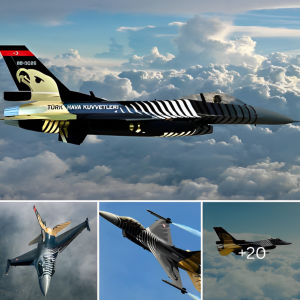Gaging ground targets while the pilot takes care of flying and air to air engagements or vice versa. Although Russia’s AI development is considerably behind China and the United States, which are the current world leaders, cooperation with China could facilitate faster development.
With twin seat Su-57 variants reported to currently be under development, and expected to be allocated command and control roles for accompanying unmanned aircraft, AIs could support the drone controller in the second seat and ensure optimal distribution of targeting data to both the officer and the accompanying UAVs.
The Su-57 is itself expected to be able to fly unmanned missions in future, which will could have significant benefits for its flight performance allowing it to manoeuvre beyond the limits a human pilot can endure.


The active radar guided R-77 and older semi active radar guided R-27 are currently relied on by all Russian fighters for air to air combat, with the R-77-1 with a 110km range having made its debut in 2015 when it was deployed to Syria to equip Su-35S heavyweight fighters at a time of high tensions with NATO in the region.
The missile had only entered service that year despite initially having been slated for entry into service in the 1990s. While formidable, the R-77 is considered much less potent compared to its American and Chinese rivals the AIM-120D and PL-15, and Russia has since developed the K-77M to bridge the performance gap. The new missile has an estimated engagement range of 200km, between that of the Chinese PL-15, at 200-300km and the American AIM-120D at 160-180km, but benefits from integration of an AESA radar previously only used by Chinese and Japanese air to air missiles.
With cropped wings to fit inside the Su-57’s weapons bays, the missile’s most notable feature is its use of a nose mounted active phased array antenna (APAA) guidance system which overcomes the traditional “field of view” problem of missile radars making it almost impossible to evade by enemy aircraft. This is expected to provide a considerably longer ‘no escape range’ and allow it to threaten even small manoeuvrable targets at ranges of over 150km.
The missile is expected to enter service before 2025, and is complemented by the R-37M which although lacking APAA guidance benefits from a higher Mach 6 speed and a longer 400km engagement range and a much larger 60kg payload.. The R-37’s greater size, however, means that fewer can be carried by each aircraft.

Su-57 FighterLaser Defences and Energy Weapons
Laser Defences and Energy Weapons
The Su-57’s airframe integrates several missile launch detector apertures providing warning of potential enemy missile attacks. An entirely unique feature which complements this is the use of laser turrets that can blind incoming missiles. This feature may be fully operational on current Su-57s, but is expected to be further refined in future as the aircraft moves beyond a limited initial operating capability.
Turrets are mounted dorsally behind and ventrally under the fighter’s cockpit, and are considered particularly effective against infra red guided missiles such as the AIM-9X launched by American fighters or the 9K32 Strela-2 surface to air missile system. With infra red guided missiles being a primary armament for visual range air to air combat, development of this system reflects Russian aviation’s general emphasis on the importance of short range capabilities due to the likelihood that countermeasures against long range missiles in a major war would make close range dogfights inevitable. No other fighter is known to have a similar defensive suite under development.
Beyond laser defences, the Su-57 is also set to integrate directed energy weapons and possibly lasers as well which have been confirmed as under development for it and for the lighter MiG-35. These will potentially replace its main cannon, and provide a more precise way of engaging fast moving targets such as enemy missiles and aircraft during flight.
Directed energy weapons are currently being developed by rival military industrial powers with the U.S. and Chinese programs reported to be in particular advanced stages, although such systems are only expected to become effective in miniaturised form suitable for fighter plans closer to the year 2030.






